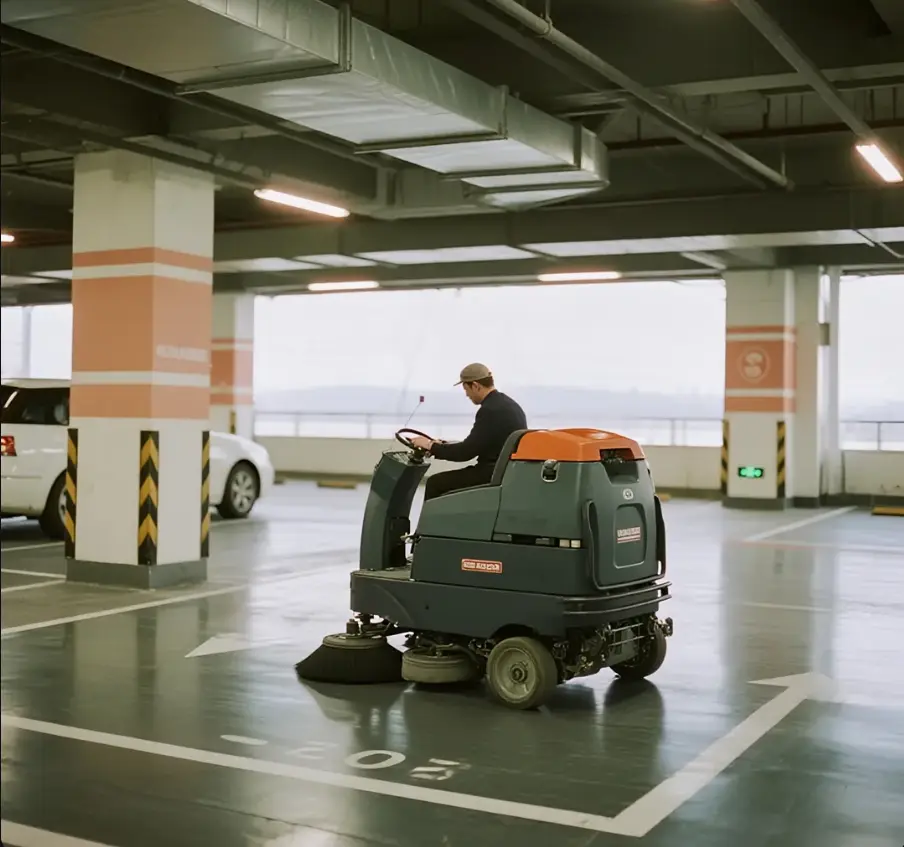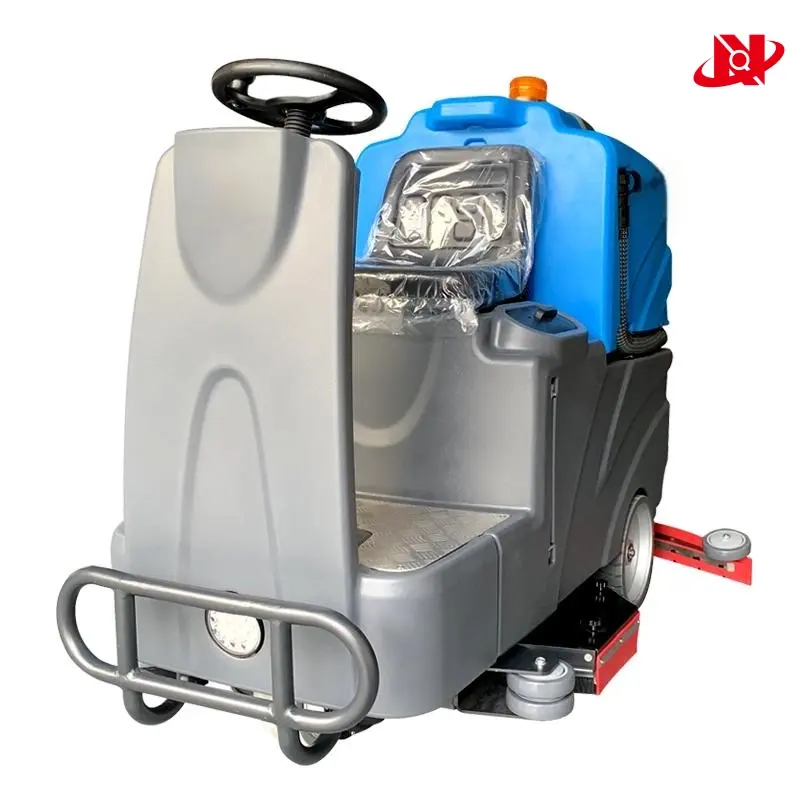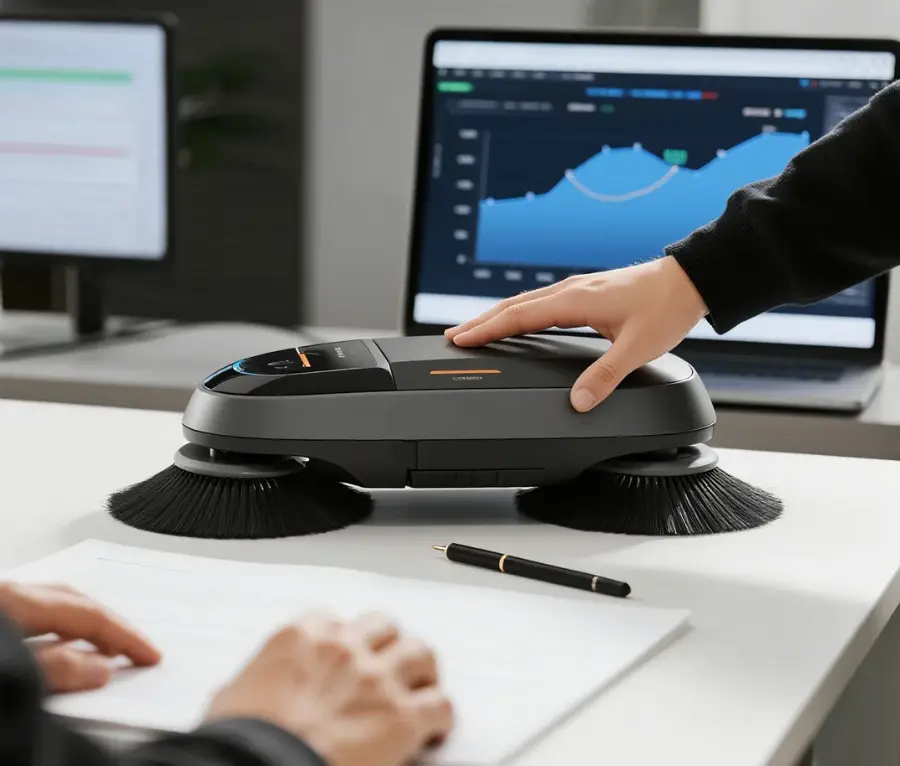Considerazioni essenziali quando si utilizza una lavasciuga pavimenti nei parcheggi: una guida completa
Data di rilascio: 2025-06-20
I parcheggi sono spesso soggetti a un intenso traffico pedonale e veicolare, che porta all'accumulo di sporco, grasso e macchie d'olio che possono compromettere sia l'estetica che la sicurezza. Una pulizia regolare con l'attrezzatura giusta, come un lavasciuga pavimenti, garantisce che il parcheggio rimanga in perfette condizioni. Tuttavia, ci sono diversi fattori da considerare quando si utilizza una lavasciuga pavimenti per la pulizia del parcheggio. In questa guida, esploreremo gli elementi critici da tenere in considerazione per garantire una pulizia efficiente, sicura e duratura del parcheggio.
Sommario
1. Comprensione delle superfici dei parcheggi
Quando si sceglie una macchina lavasciuga per la pulizia di parcheggi, è essenziale conoscere il tipo di superficie. Le due superfici più comuni sono il cemento e l'asfalto, ciascuna delle quali richiede approcci di pulizia specifici:
- Superfici in calcestruzzo: I parcheggi in cemento possono avere una consistenza variabile, pertanto è necessario scegliere una macchina lavapavimenti adatta a seconda che la superficie sia liscia o ruvida. Una superficie ruvida potrebbe richiedere macchine più potenti.
- Superfici in asfalto: L'asfalto è più poroso e soggetto a macchie di olio e grasso. Per evitare di danneggiare la superficie, è consigliabile utilizzare detergenti speciali e strofinacci delicati.
2. Scegliere la giusta lavasciuga pavimenti per i parcheggi
La scelta della macchina lavasciuga pavimenti più adatta per la pulizia dei parcheggi dipende dalle dimensioni del parcheggio e dalle specifiche esigenze di pulizia:
- Lavasciuga pavimenti uomo a terra: Sono ideali per parcheggi più piccoli o per lavori di pulizia più approfonditi. Sono facili da manovrare, ma potrebbero risultare più lenti su aree più grandi.
- Lavasciuga pavimenti uomo a bordo: Ideali per parcheggi di grandi dimensioni, le lavasciuga uomo a bordo consentono una pulizia più rapida ed efficiente. Sono dotate di serbatoi d'acqua più grandi e motori potenti che consentono sessioni di pulizia prolungate.
Quando si sceglie una spazzola, assicurarsi che sia progettata specificamente per l'uso esterno, poiché i parcheggi presentano maggiori difficoltà rispetto ai pavimenti interni.
3. Considerazioni sulla sicurezza durante la pulizia del parcheggio
L'uso di una lavasciuga pavimenti in un parcheggio richiede un'attenta pianificazione della sicurezza:
- Segnali di avvertimento e coni: Posizionare una segnaletica chiara per avvisare pedoni e automobilisti di tenersi lontani dall'area di pulizia. Questo è particolarmente importante nei parcheggi ad alto traffico.
- Gestione del traffico: Se il parcheggio rimane aperto durante la pulizia, allontanare veicoli e pedoni dal percorso della macchina per ridurre al minimo i rischi.
- Sicurezza dell'operatore: Per una maggiore protezione, l'operatore deve indossare indumenti ad alta visibilità, guanti e calzature antiscivolo.
4. Ottimizzazione dell'uso di acqua e prodotti chimici
L'acqua e i prodotti chimici per la pulizia svolgono un ruolo fondamentale nella pulizia dei parcheggi, ma un uso improprio può portare a condizioni pericolose:
- Gestione delle acque: Evitare un consumo eccessivo di acqua che potrebbe causare allagamenti. Controllare il flusso dell'acqua per evitare danni al sistema di drenaggio del parcheggio.
- Prodotti chimici per la pulizia: Scegli detergenti appropriati che possano rimuovere efficacemente sporco e grasso, nel rispetto dell'ambiente e della superficie del parcheggio. Utilizza lavasciuga pavimenti ecologiche che riducano l'impatto ambientale.
- Asciugatura e risciacquo: Una volta terminata la pulizia, utilizzare il sistema tergipavimento della lavasciuga per rimuovere l'acqua in eccesso e accelerare l'asciugatura, riducendo il rischio di scivolamento.
5. Manutenzione della lavasciuga pavimenti per una maggiore longevità
La manutenzione della lavasciuga pavimenti garantisce una pulizia efficiente e ne prolunga la durata. La manutenzione regolare include:
- Controllo della spazzola e del tergipavimento: Controllare l'usura delle spazzole e dei tergipavimento. Sostituirli quando necessario per mantenere prestazioni di pulizia ottimali.
- Cura della batteria: Se si utilizza una spazzola a batteria, mantenere le batterie cariche e sottoposte a manutenzione adeguata per ottenere la massima efficienza.
- Pulizia post-uso: Pulire la spazzola dopo ogni utilizzo per evitare l'accumulo di sporco e incrostazioni. Ciò ne migliorerà la durata e garantirà risultati di pulizia costanti.
6. Garantire un parcheggio sicuro e asciutto dopo la pulizia
Una volta completata la pulizia, è fondamentale gestire i tempi di asciugatura per evitare rischi di scivolamento. Assicurarsi che il parcheggio sia asciutto prima di riaprirlo a veicoli e pedoni. Ecco alcuni suggerimenti:
- Tempo di asciugatura: Lasciare asciugare completamente il pavimento prima di consentire nuovamente il parcheggio dei veicoli.
- Soluzioni antiscivolo: Si consiglia di applicare un rivestimento antiscivolo sulla superficie del parcheggio per migliorare la trazione, soprattutto nelle aree che tendono a diventare scivolose quando sono bagnate.
7. Efficienza dei costi nell'utilizzo di una lavasciuga pavimenti
Sebbene l'investimento iniziale in una lavasciuga pavimenti possa sembrare elevato, può rivelarsi conveniente nel lungo periodo, riducendo il lavoro manuale e garantendo risultati costanti. Considerate quanto segue:
- Costi di manodopera: Una lavasciuga pavimenti riduce notevolmente i tempi di manodopera, consentendo una pulizia più efficiente di ampi parcheggi in meno tempo.
- Efficienza energetica e idrica: Gli scrubber moderni sono progettati per essere efficienti dal punto di vista energetico e utilizzare l'acqua in modo giudizioso, riducendo ulteriormente i costi operativi.
Conclusione
L'utilizzo di una lavasciuga pavimenti per la pulizia dei parcheggi garantisce che la struttura rimanga pulita, sicura e accogliente sia per i pedoni che per i veicoli. Scegliendo l'attrezzatura giusta, garantendo la sicurezza, gestendo efficacemente l'uso di acqua e prodotti chimici ed effettuando una manutenzione regolare, è possibile mantenere un parcheggio pulito con il minimo rischio e la massima efficienza.



